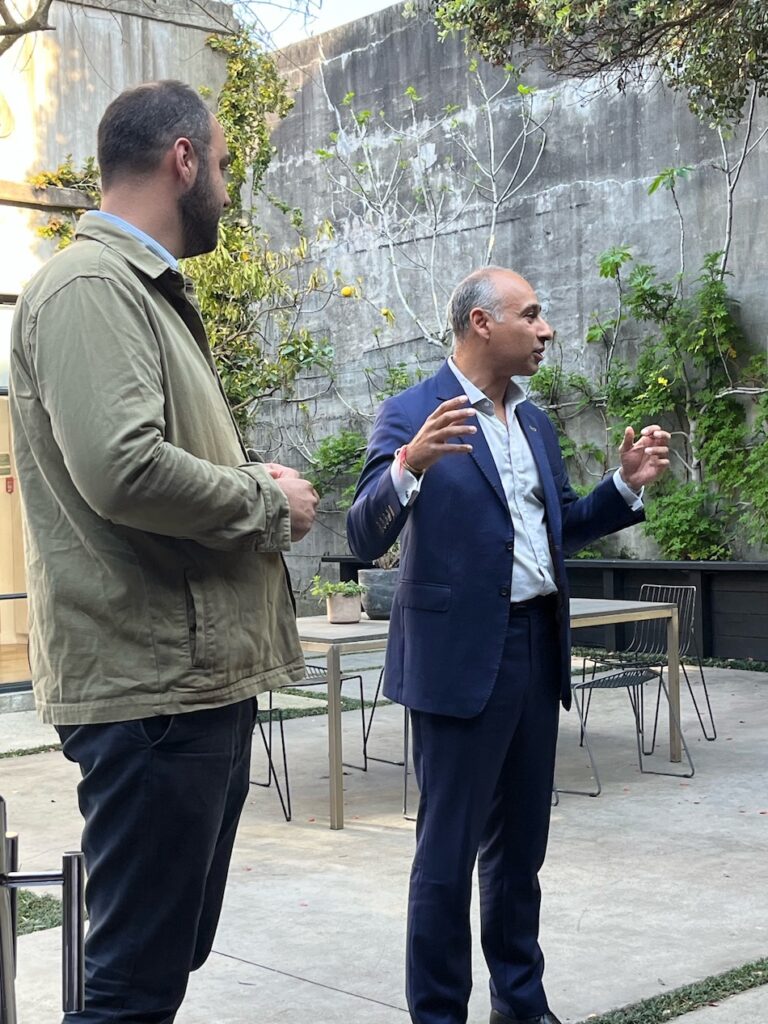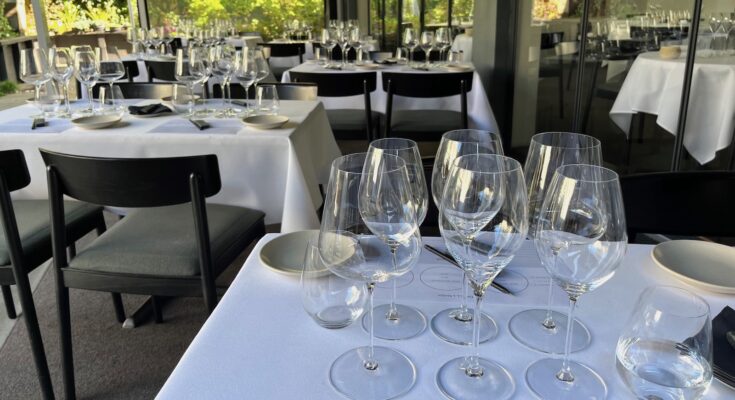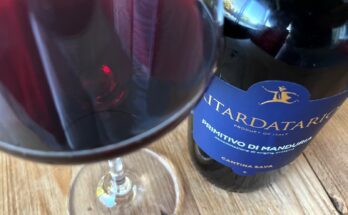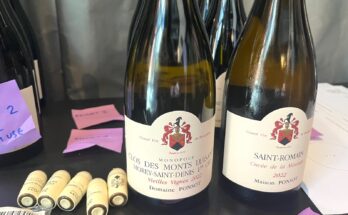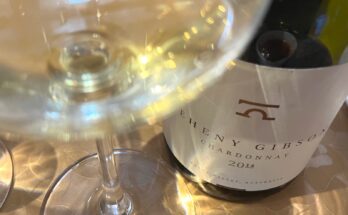Chateau Troplong Mondot, has 30 hectares of fine terroir – the vineyards in a prime position on the hill of Mondot – the high point of the St-Emilion appellation, overlooking the village. The 33 hectare vineyard is considered to be a large estate as the majority of properties in this area are generally under 10 hectares. The soils are layered in a rich limestone-clay and are planted with Merlot (90%), Cabernet Franc (5%) and Cabernet Sauvignon (5%).
Changes have been made at Troplong Mondot in recent years. Not just the physical building of new cellars, winemaking areas and a restaurant; but decisions to harvest earlier and reduce extraction. I also hear of a reduced use of new oak, with large format barrels being adopted as well. Through the vintages I’d tried at the end of the last century and into 2000s, I had always considered the house style to be one that I would describe as rich and opulent. Trying some of these more recent vintages, I see wines that are still powerful, but lean more towards a style that is elegant but fresh.
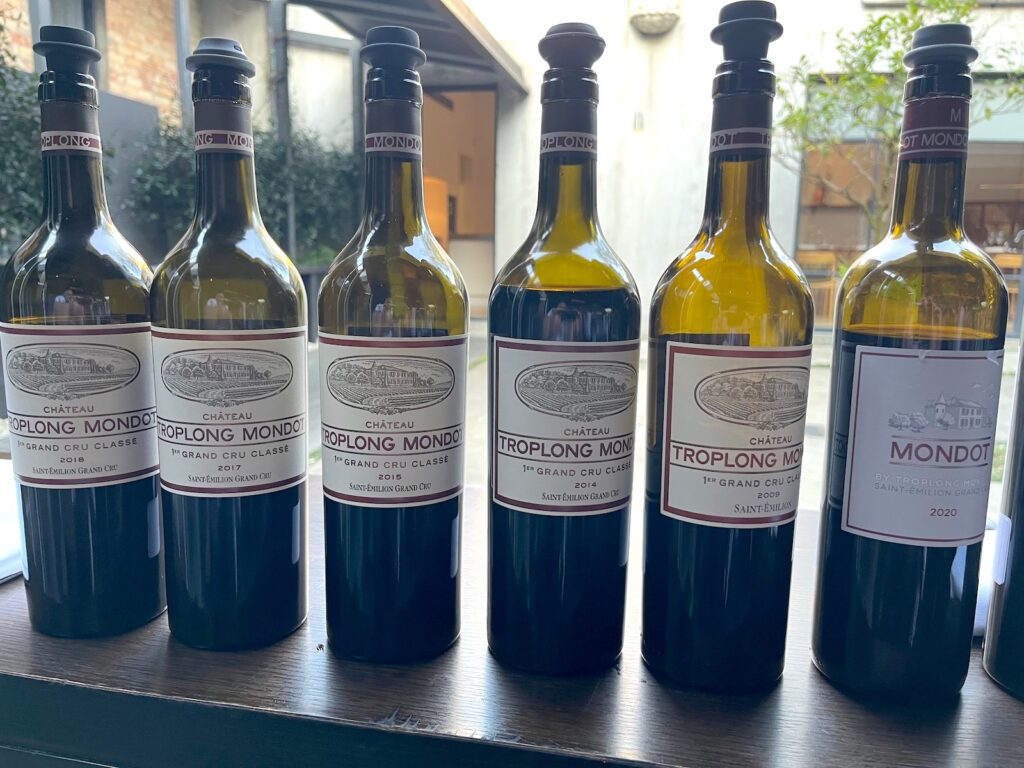
The afternoon is hosted by Dhall & Nash, and starts with two vintages of a wine I’ve not tasted before – Mondot. There’s a 2018 and a 2020. This isn’t a second wine, but rather a wine made from vineyards that were more recently acquired by the Estate. The wine is 100% Merlot, and has a great varietal character. The limestone character shines through, with a line of acidity that is buoyant, fresh and lends a lightness of touch to the palate. Tannin is fine, and the whole wine feels tight and juicy, rather than rich and broad. I find a lithe green ‘good’ bitterness to the finish – particularly in the 2020. Their sights might be aiming at Petrus, but there’s a long way to go before this is close to that legendary drop. This is a well-crafted wine, but I don’t see local audiences embracing the style over something they could pick up from Hawke’s Bay (for example) for less.
I like the idea of starting the flight of the Premier Grand Cru Classé wine – Troplong Mondot at the oldest wine and working back to the youngest. It is something I’ve seen adopted recently at tastings, and really works well, for me – as opposed to starting young and heading towards an aged example. Today it is a 2009. I made a comment to a colleague at the tasting that 2009 doesn’t seem particularly old to me – the last couple of tastings I’ve had (this year) of Bordeaux wines have been over twenty year old wines, and I do consider that to be the ‘drinking window’ for good wines – like this.
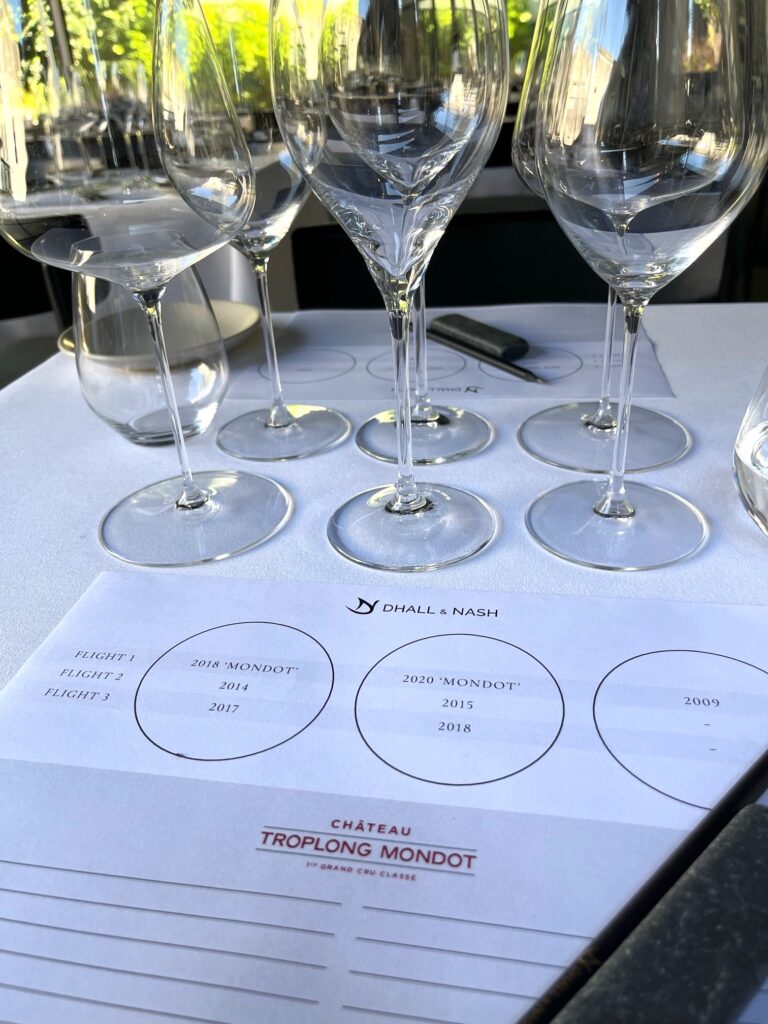
Anyway. The 2009 appears fairly advanced on first approach. A re-fill of the glass seems better – fresher. You do need to be aware that bottles will differ – but I’m guessing that at a few hundred dollars per bottle, you are going to be hoping that ‘your’ bottle is perfect – as the second fill was. This wine is big. It is still based on Merlot – around the 85% mark, but actually feels quite ‘New World’. And I’m thinking Aussie or California here. The presence of oak is huge. Now, I’m not shy on a bit of oak – I have 25+ year old vintages of Octavius and Silver Oak in my Cellar, so I’m really NOT complaining here. It just comes across as a bit heavy-handed for a fine claret. It is very concentrated, weighty and rich. I wonder if this vintage needs more time? Look back in another ten years?
A LOT better are a pair of vintages from 2014 and 2015. Quite different due to vintage variation, but stylistically in tune with each other. The ’14 comes across much cooler in style. Less oak, with blue fruits and a lovely purity to the fruits. Look for savoury nuance in layers through the palate here – cigar box, leather and nori, plus a little red liquorice sliding in. So fresh and vibrant, with a remarkable persistance to the finish.
A 2015 shows exquisite balance too. The tannins are chewy and obvious, but lengthy and velvetty too. Again, this could be from the New World. A super density to the palate now – the delicacy of the 2014 isn’t on show here – rather a return to power and weight. As the wine unwinds, it might actually be more enjoyable to that 2014, just. It packs a punch, and pushes a lot of buttons.
The last couple of wines start to complete a sense of evolution. In the 2017, that green note returns, with a herbal, untoasted tobacco and bay leaf flavours. The ripe juice bleeds through, with tamarillo, cherry and plum to the fore. Slightly reductive but coupled with a lighter extraction, this is an interesting new path to trek along.
The 2018 is more likeable – punchy and jazzy. Less depth and mystery here but makes up for that with zing and pop. Pomegranate, cassis and damson vie with other flavours like beetroot and rhubarb. I find the energy in this vintage just a little off-putting for now. I’d like a calmer, gentler expression, but it is an interesting direction for sure.
